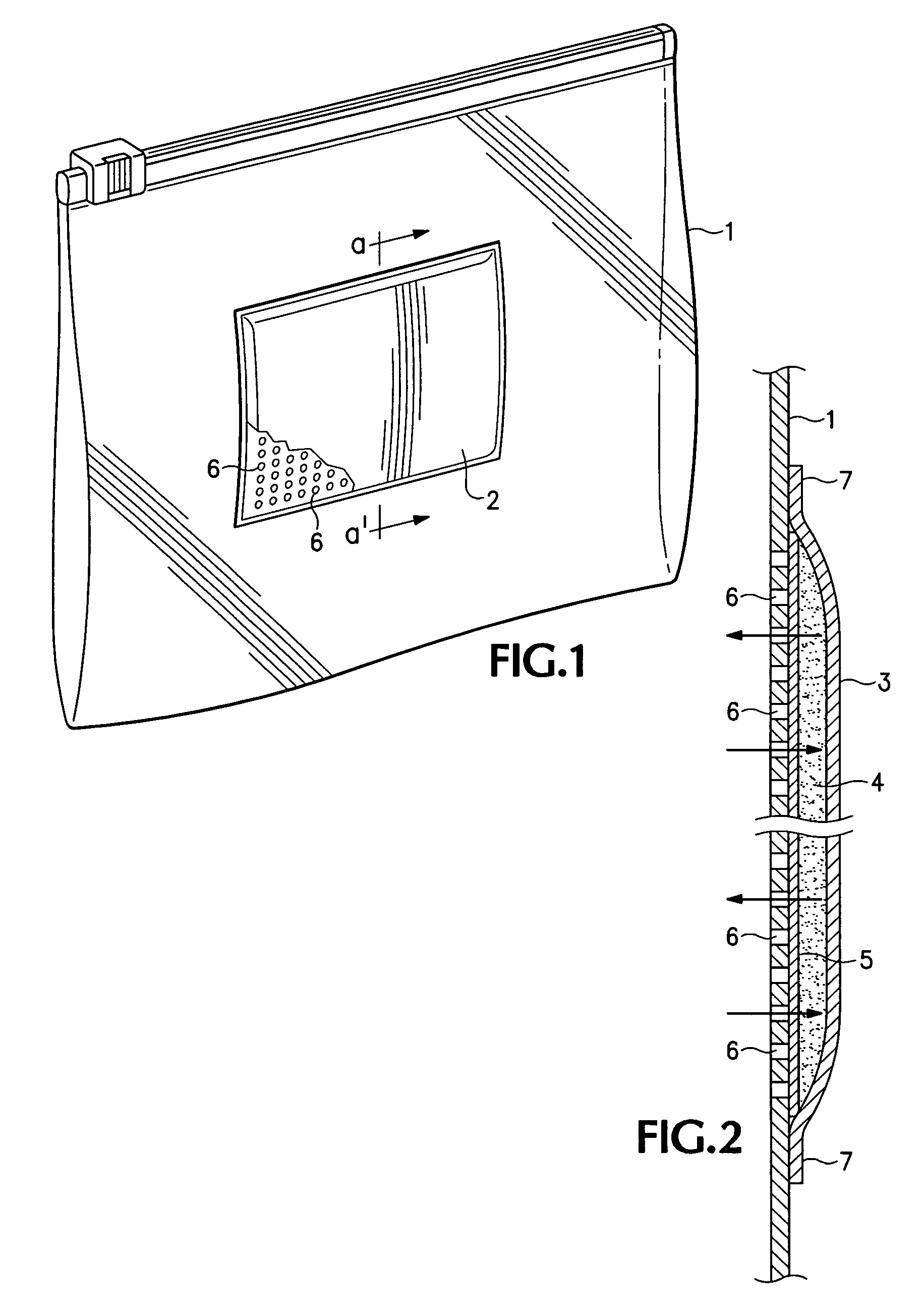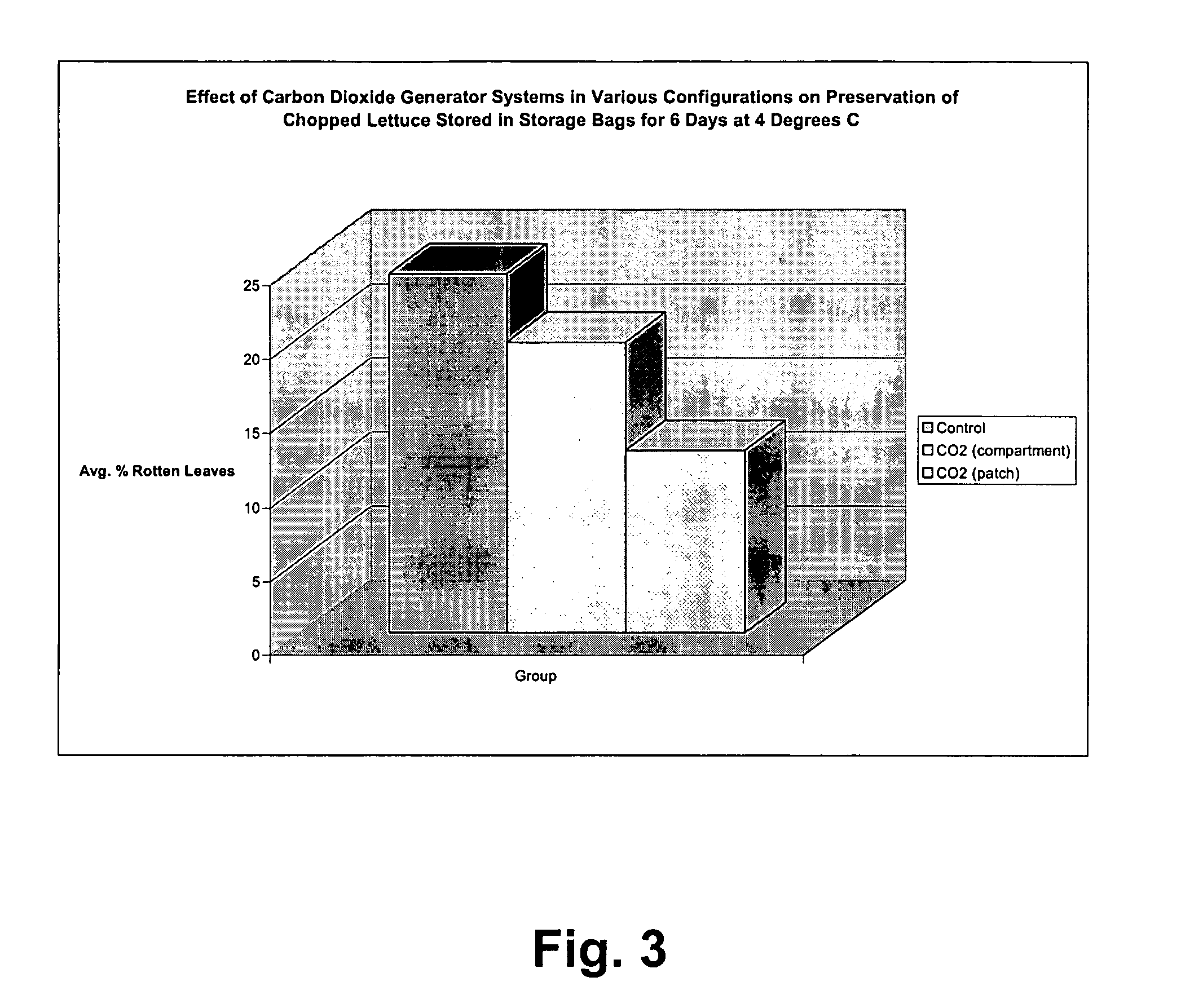Packaging system for preserving perishable items
a packaging system and perishable technology, applied in the field of packaging systems for preserving perishable items, can solve the problems of leaking contents of sachets, two methods of applying active packaging technologies have considerable problems, and the organoleptic and physical properties of produce prior to significant deterioration
- Summary
- Abstract
- Description
- Claims
- Application Information
AI Technical Summary
Problems solved by technology
Method used
Image
Examples
example 1
[0039]Testing involving a moisture activated system focused on the use of a carbon dioxide generation mixture consisting of 2.06 g of sodium bicarbonate and 1.84 g of tartaric acid. The basic premise of these experiments was that the absorbent paper would sequester free moisture created by the commodity while being stored under refrigeration. The absorption of water by the absorbent paper would expose the water to the sodium bicarbonate / tartaric acid mixture via direct contact, with the result of this reaction being the generation of carbon dioxide gas. The carbon dioxide gas would then migrate into the headspace of the bag and have a preservative effect on the commodity itself enclosed in the bag.
[0040]Approximately 100 g of chopped lettuce were added into each bag and all bags were stored under refrigeration at 4° C. The carbon dioxide generation mixture was stored either in the patch as described or in a porous compartment at the bottom of the bag. Storage bags containing no patc...
example 2
[0043]Experimentation was also directed toward determining whether or not carbon dioxide generation mixtures could be used to preserve store-bought fruit commodities. The patch and its contents in these experiments were identical to those described in Example 1. Grapes were used as the test commodity and were inoculated with the decay fungus Botrytis cinerea prior to storage in bags by immersion in a solution containing 1×103 spores / mL. Grapes were stored under refrigeration at 4° C. for an average of 14 days. They were assessed by simply deriving a percentage of rotten fruit by comparing the number of those exhibiting the symptoms of B. cinerea infection to the total number of grapes present in each bag (20 for most experiments). Surprisingly, the grapes stored in bags containing the external carbon dioxide generating patch were better preserved than were those in the control group bags (see FIG. 6). This result, like Example 1, was well correlated with increased carbon dioxide lev...
PUM
 Login to View More
Login to View More Abstract
Description
Claims
Application Information
 Login to View More
Login to View More - Generate Ideas
- Intellectual Property
- Life Sciences
- Materials
- Tech Scout
- Unparalleled Data Quality
- Higher Quality Content
- 60% Fewer Hallucinations
Browse by: Latest US Patents, China's latest patents, Technical Efficacy Thesaurus, Application Domain, Technology Topic, Popular Technical Reports.
© 2025 PatSnap. All rights reserved.Legal|Privacy policy|Modern Slavery Act Transparency Statement|Sitemap|About US| Contact US: help@patsnap.com



